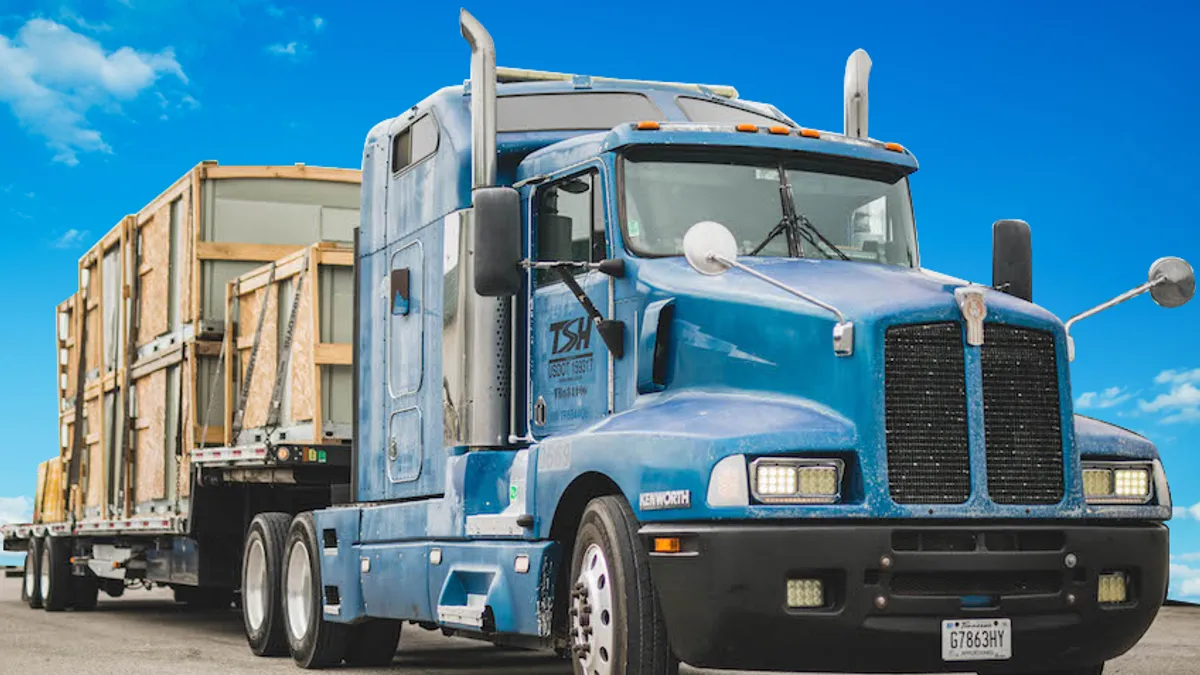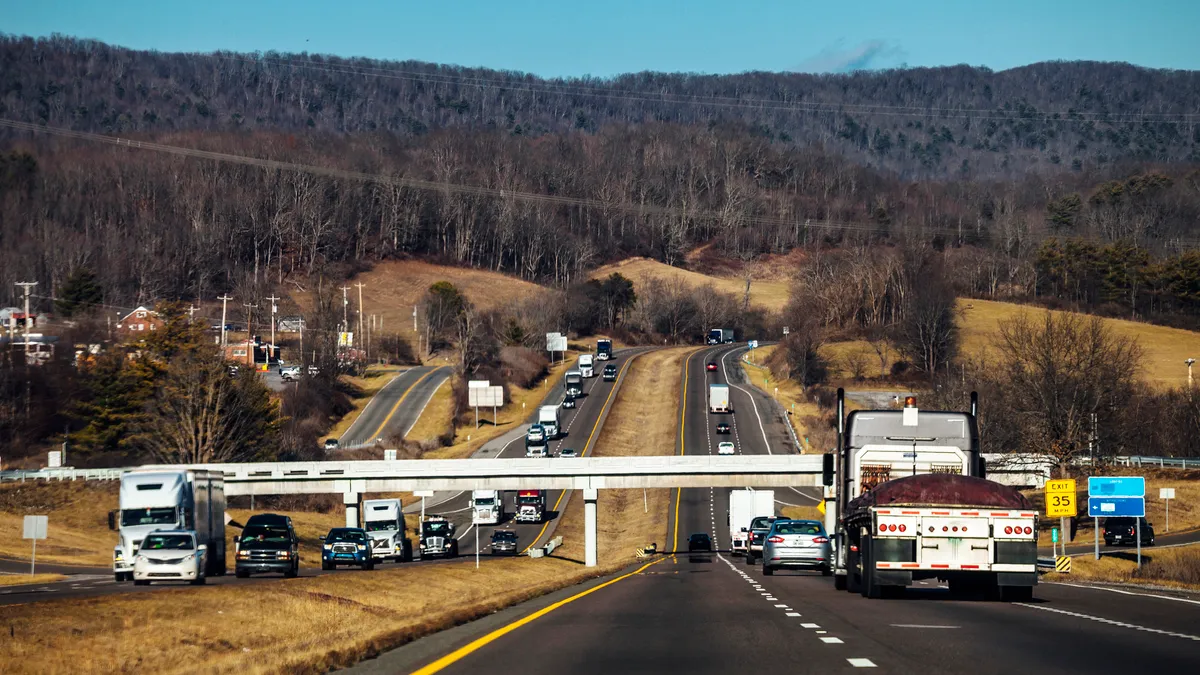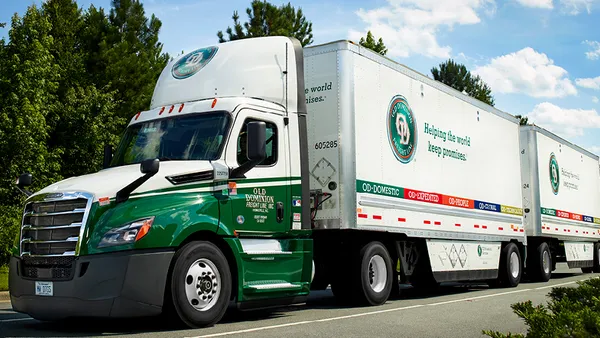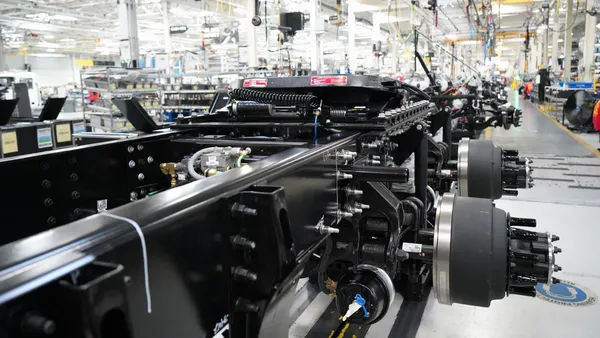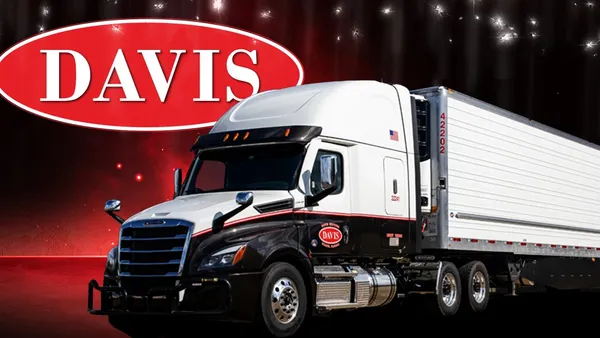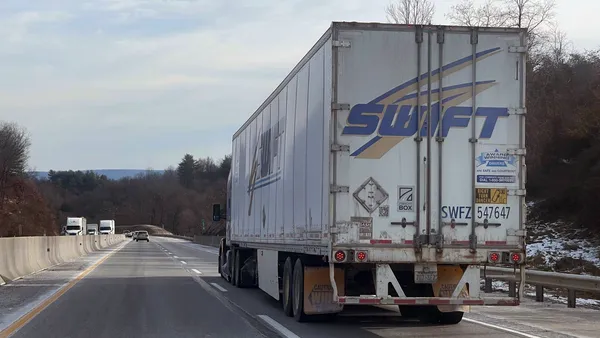Dive Brief:
- The industrial sector remained "lackluster" in July, with growth in heavy machinery and building products down by 21.6% and 7.1% respectively, year over year, according to Panjiva, S&P Global Market Intelligence's research arm.
- But flatbed spot rates have been rising all summer. Rates increased 1% week over week to $2.03 per mile for the week ended Aug. 9, according to DAT's most recent data. Flatbed rates are 8% higher than the same week in August 2019, but still 26 cents lower than the 5-year spot rate peak in 2018, DAT reported.
- The pace of increase in flatbed rates appears to be slowing, DAT said, with a downturn turn expected soon. DAT said flatbed spot rates could be $1.95 per mile in early September.
Dive Insight:
Flatbed has had a unique run during the COVID-19 pandemic. While demand for food and household items drove panic buying in the early stages of the shutdowns, and that drove dry van and reefers, demand for flatbed hauling has shifted between its usual big customers.
Steel customers postponed flatbed hauling, but other shippers noticed heightened demand for large items used in construction and home improvement. Right now, flatbed is responding to higher-than-normal demand for pressure-retreated lumber, which consumers are snapping up because of household improvements, said Dean Croke, DAT principal analyst.
Demand for such heavy goods is balancing out a decline in industrial-related flatbed hauling. But carriers and 3PLs are hoping industrial business will return to normal too.
Daseke, one of the nation's largest flatbed haulers, said it was helped by lumber and wind-energy components.
"End markets like wind energy, lumber and building materials held fairly steady through the quarter and are actually progressing ahead of last year," said Chris Easter, Daseke CEO, during the company's earnings call for the second quarter on Aug. 6. "These verticals helped offset softness in other end markets that were materially impacted by COVID-19, like aerospace and metals."
During a Q2 earnings call, on July 30, Universal Logistics CEO Tim Phillips said he hopes the second half of 2020 will bring more industrial flatbed business, saying metals were showing a slow and winding improvement coming out of the pandemic-related shutdowns of steel plants and auto factories.
"Truckload rates are strong and we are optimistic the sequential improvement in industrial production will carry over into our growing flatbed activity throughout the back half of the year," Phillips said. "Our industrial products are steel and metals that had taken a pretty good hit once manufacturing and automotive shutdown."
Wind power is a growing market for flatbed trucks. Turbines need to be transported in big pieces, and can not be broken down in dry vans. ATS, a carrier in Minnesota, claims at least 25% of the market, carrying at least 10,000 loads a year, according to Freightwaves. Wind turbines create emissions-free electricity without using fossil fuels.
U.S. companies have invested $143 billion in wind projects from 2009 to 2019, according to Great American Group, a B. Riley Financial company.


